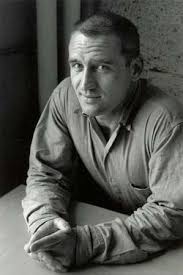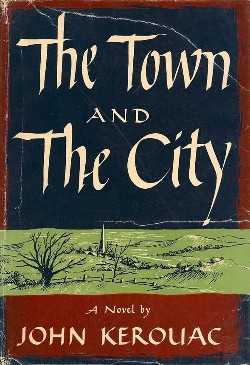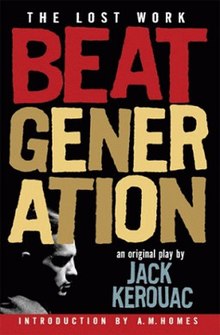
Jean-Louis Lebris de Kérouac, known as Jack Kerouac, was an American novelist and poet who, alongside William S. Burroughs and Allen Ginsberg, was a pioneer of the Beat Generation.

Beatniks were members of a social movement in the 1950s and early 1960s who subscribed to an anti-materialistic lifestyle. They rejected the conformity and consumerism of mainstream American culture and expressed themselves through various forms of art, such as literature, poetry, music, and painting. They also experimented with spirituality, drugs, sexuality, and travel. The term “beatnik” was coined by San Francisco Chronicle columnist Herb Caen in 1958, as a derogatory label for the followers of the Beat Generation, a group of influential writers and artists who emerged in the late 1940s and early 1950s. The name was inspired by the Russian suffix “-nik”, which was used to denote members of various political or social groups. The term “beat” originally was used by Jack Kerouac in 1948 to describe his social circle of friends and fellow writers, such as Allen Ginsberg, William S. Burroughs, and Neal Cassady. Kerouac said that “beat” had multiple meanings, such as “beaten down”, “beatific”, “beat up”, and “beat out”. He also associated it with the musical term “beat”, which referred to the rhythmic patterns of jazz, a genre that influenced many beatniks.
Pull My Daisy is a 1959 American short film directed by Robert Frank and Alfred Leslie, and adapted by Jack Kerouac from the third act of his play, Beat Generation.

The Beat Generation was a literary subculture movement started by a group of authors whose work explored and influenced American culture and politics in the post-World War II era. The bulk of their work was published and popularized by Silent Generationers in the 1950s, better known as Beatniks. The central elements of Beat culture are the rejection of standard narrative values, making a spiritual quest, the exploration of American and Eastern religions, the rejection of economic materialism, explicit portrayals of the human condition, experimentation with psychedelic drugs, and sexual liberation and exploration.

Neal Leon Cassady was a major figure of the Beat Generation of the 1950s and the psychedelic and counterculture movements of the 1960s.

On the Road is a 1957 novel by American writer Jack Kerouac, based on the travels of Kerouac and his friends across the United States. It is considered a defining work of the postwar Beat and Counterculture generations, with its protagonists living life against a backdrop of jazz, poetry, and drug use. The novel is a roman à clef, with many key figures of the Beat movement, such as William S. Burroughs, Allen Ginsberg, and Neal Cassady represented by characters in the book, including Kerouac, himself, as the narrator, Sal Paradise.

Janet Michelle "Jan" Kerouac was an American writer and the only child of beat generation author Jack Kerouac and Joan Haverty Kerouac.

John Clellon Holmes was an American author, poet and professor, best known for his 1952 novel Go. Considered the first "Beat" novel, Go depicted events in his life with his friends Jack Kerouac, Neal Cassady and Allen Ginsberg. He was often referred to as the "quiet Beat" and was one of Kerouac's closest friends. Holmes also wrote what is considered the definitive jazz novel of the Beat Generation, The Horn.

The Town and the City is a novel by Jack Kerouac, published by Harcourt Brace in 1950. This was the first major work published by Kerouac, who later became famous for his second novel On the Road (1957). Like all of Jack Kerouac's major works, The Town and the City is essentially an autobiographical novel, though less directly so than most of his other works. The Town and the City was written in a conventional manner over a period of years, and much more novelistic license was taken with this work than after Kerouac's adoption of quickly written "spontaneous prose". The Town and the City was written before Kerouac had developed his own style, and it is heavily influenced by Thomas Wolfe.

Lucien Carr was a key member of the original New York City circle of the Beat Generation in the 1940s and also a convicted manslaughterer. He later worked for many years as an editor for United Press International.

Joyce Johnson is an American author of fiction and nonfiction. She was born Joyce Glassman in 1935 to a Jewish family in New York City and raised in the Morningside Heights neighborhood of Manhattan, a few blocks from the apartment of Joan Vollmer Adams where William Burroughs, Allen Ginsberg and Jack Kerouac lived from 1944 to 1946. She was a child actress and appeared in the Broadway production of I Remember Mama, which she writes about in her 2004 memoir Missing Men.

Peter Anton Orlovsky was an American poet and actor. He was the long-time partner of Allen Ginsberg.

Visions of Gerard is a novel by American Beat writer Jack Kerouac. Kerouac wrote it over the course of the first two weeks of 1956, while staying with his sister Caroline in Rocky Mount, North Carolina, and it was published in 1963. It is the first volume in Kerouac's "Duluoz Legend". Visions of Gerard focuses on the scenes and sensations of childhood as evidenced in the short yet happy life of his older brother, Gerard. Kerouac paints a picture of the boy as a saint, who loves all creatures and teaches this doctrine to four-year-old Jack. Set in Kerouac's hometown of Lowell, Massachusetts, it is an exploration of the meaning and precariousness of existence.
Carolyn Elizabeth Robinson Cassady was an American writer and associated with the Beat Generation through her marriage to Neal Cassady and her friendships with Jack Kerouac, Allen Ginsberg, and other prominent Beat figures. She became a frequent character in the works of Jack Kerouac.
Ann Charters is Professor Emerita of American Literature at the University of Connecticut at Storrs. She is a Jack Kerouac and Beat Generation scholar.
"Pull My Daisy" is a poem by Allen Ginsberg, Jack Kerouac and Neal Cassady. It was written in the late 1940s in a similar way to the Surrealist “exquisite corpse” game, with one person writing the first line, the other writing the second, and so on sequentially with each person only being shown the line before.
Jack Kerouac was an American novelist and poet. He is considered a literary iconoclast and, alongside William S. Burroughs and Allen Ginsberg, a pioneer of the Beat Generation. Kerouac is recognized for his method of spontaneous prose. Thematically, his work covers topics such as Catholic spirituality, jazz, promiscuity, Buddhism, drugs, poverty, and travel. Kerouac used the name "Duluoz Legend" to refer to his collected autobiographical works.

Merrimack Repertory Theatre (MRT) is a non-profit professional theatre located in Lowell, Massachusetts, USA. Known for its productions of contemporary work and world premieres, the company presents a September - May season of seven plays at the Nancy L. Donahue Theatre in the historic Liberty Hall, a 279-seat theatre located adjacent to the Lowell Memorial Auditorium. MRT is the only professional theatre company in the Merrimack Valley region of Massachusetts and New Hampshire, and one of three League of Resident Theatres (LORT) members in Massachusetts.
Naked Lens: Beat Cinema is a book by Jack Sargeant about the relationship between Beat culture and underground film. First published by Creation Books in 1997, the book has been subsequently republished in two different English language editions, by Creation Books in 2001 and Soft Skull in 2008. The book also features contributions from Tessa Hughes-Freeland, Stephanie Watson, and Arthur and Corrine Cantrill.

Pawtucketville is a neighborhood and village within the city of Lowell, Massachusetts.














